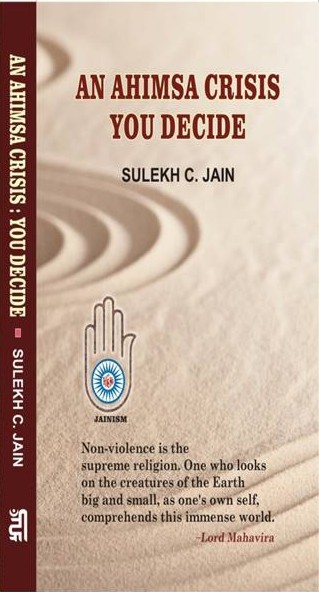In early 1900s, Lala Roop Lal Jain was a prominent and respected member of the Jain community in Punjab. He was a magistrate in the princely state of Faridkot during the British colonial days. In those days, being a magistrate was considered to be very respectable and prestigious position. Roop Lal Ji was an active, visionary, and ahimsak sharavak. He practiced the Jain way of life in everything he did.
In the 1920s and 1930s, he was also instrumental in the establishment and building of the Jinendra Jain Gurukul at Panchkula. Today, the City of Panchkula is a suburb of the City of Chandigarh and also a second capital city of the State of Haryana. I personally met Lala Roop Lal ji in the early 1960s when he used to live at the Jinendra Jain Gurukul.
The following story was told to me by Lala Roop Lal Ji’s own eldest son, Des Raj Jain himself. “When Des Raj was born in the town of Faridkot (in Punjab), in the same town in another Jain family, a girl was also born a few months later. As was the custom in those days, the girl’s father came to the boy’s father (Lala Roop Lal ji) and said that he would to like to have his daughter engaged in a matrimonial relation with Des Raj. Mind you, both the girl and the boy were infants. In those days, the custom of arranged marriages was extremely prevalent. Only a formal commitment (verbal agreement) to a matrimonial commitment was all that was needed. The actual marriage would take place when the boy and the girl reached puberty. Now, Lala Roop Lal Ji agreed to this offer and gave his word that his infant son Des Raj would now be engaged to this infant girl. The whole Jain community came to know of this news.
In the course of time, after a few years, the girl’s father died suddenly, leaving behind a wife and four very young children. In those days, there were no life insurance, social security, pensions, or any such thing. The father was the only breadwinner and now he was no more. Most of the families only had modest assets as they were just middle or lower middle class. Due to economic necessities, the girl’s mother, to feed her family, started working in Jain and non-Jain homes as a domestic servant doing dishes, laundry, cleaning floors, cooking food, and other chores. Such kind of work was considered very demeaning and menial in the society, as only the people from very low castes would do such things, but not usually Jains. The entire Jain community knew about the mother’s work.
When the time for the children’s marriage came nearer, some prominent members of the local Jain community came to persuade Lala Roop Lal ji to decline, undo and nullify his earlier commitment and not to allow the marriage between his son and the girl take place. The reason given was that the girl’s family was now destitute and so now, the matrimonial relationship was not up to par with the status of Roop Lal Ji.
On hearing this, Roop Lal Ji was really pained. He reminded this group that they knew very well what economic hardship the girl’s family was going through, and what had the Jain community done to alleviate their hardship? He was further pained that the same community who had done absolutely nothing for the affected family in their hour of need, has now come to tell him that not only should the family should continue starving, but in addition, the daughter should not be able to get married as well. He posed the question: Is this what you think Ahimsa is and should be? Now more than ever was there reason to have the marriage take place as promised, and Roop Lal Ji declared that it would be so. Des Raj did marry the same girl, as originally promised, years earlier.
What a great lesson in ahimsa Lala Roop Lal Ji presented to the Jain community, and not as a sermon but by practical application. We need more of such sharavaks today.
Throughout his life, Lala Roop Lal Ji donated a significant portion (more than sixty percent) of his monthly paycheck for the welfare causes of the community, for the sick, and for the downtrodden.
 Dr. Sulekh Chand Jain
Dr. Sulekh Chand Jain
